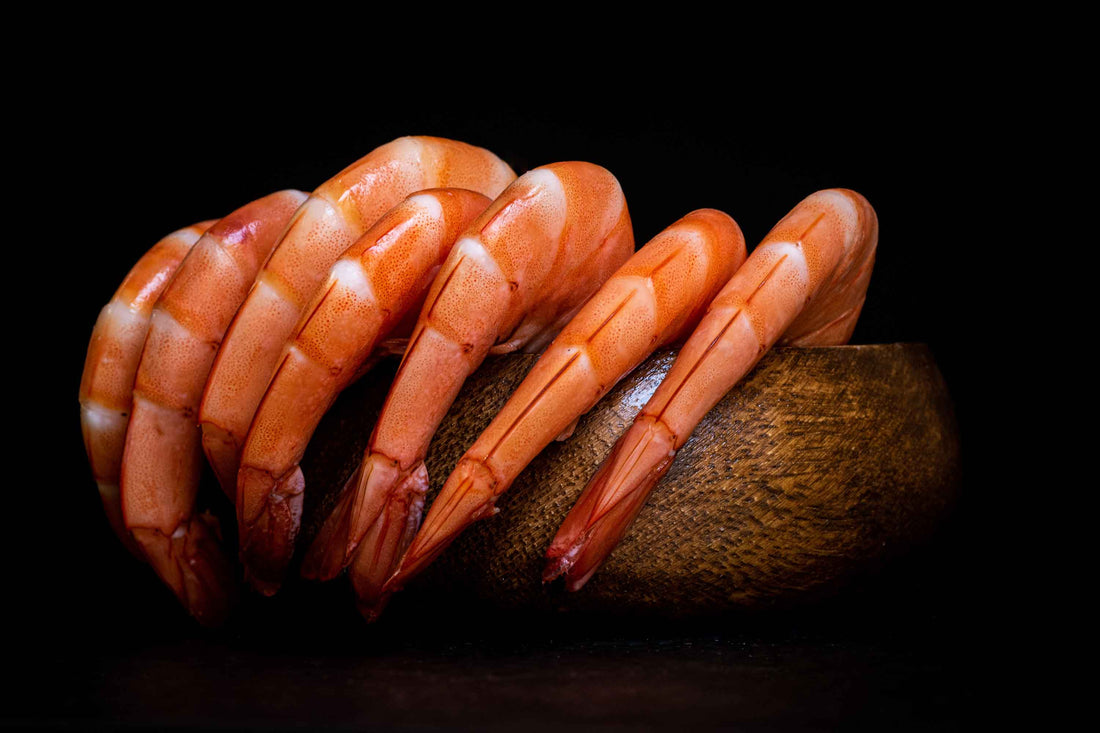
Prawn or shrimp? What's the difference?
Share
What’s the difference between shrimp and prawns, and does it really matter?
You may think that shrimp and prawn are the same animal but this isn’t even remotely true.
They are both decapods, meaning that they have 10 legs, but that’s where the similarities come to an end. Neither shrimp nor prawns are ‘sea bugs’, but they are crustaceans, which are arthropods. So they are like long lost cousins of insects probably stemming back about 200 million years and likely all originally descended from zooplankton, if you believe in evolution.
Let’s start with shrimp, which technically belong to sub-order Pleocyemata.
Shrimp commonly live in shallow or deep saltwater from the tropics to the poles, especially near the coasts. Its estimated that less than 25% of shrimp live in freshwater. And they usually live less than two years.
Their bodies are divided into two parts: thorax and head. Their body is protected by a shell which also works as a protection from predators. They possess claws on two pairs of their legs and a very distinct bend to their shape caused by the overlapping of their shell segments. Thanks to this curvature it is easier to distinguish between prawns when you’re shopping at the market.
Prawns actually belong to the sub-order Dendrobranchiata.
In North America, the word ‘prawn’ is typically used to denote a larger variety of these 2 crustaceans.
Prawns are larger than shrimp most of the time and can also commonly live in fresh water. Their bodies are more straight looking when compare to the curled body of shrimps. Prawns have claws on three pairs of their legs. And again, the easiest way to differentiate from shrimps is based on the curvature of their body, so remember if it’s curled then it’s shrimp and straight body equals prawn.
Do they taste different?
It’s nearly impossible to tell the difference just based on the taste, so you won’t be able to identify each other just based on taste. Even the Canadian government seems to have a hard time distinguishing between them as you can see Shrimp and prawn biology | Pacific Region | Fisheries and Oceans Canada.
The terms shrimp and prawn are colloquial and contain no real scientific bearing. Even the infamous Spot Prawns are in-fact SHRIMP!
However, some people say that prawns have a slightly sweeter and meatier taste, and some same that shrimp are sweeter and more tender, but we will let you be the judge on this; that is, if they’re even labelled properly! It's a real industry challenge as you know.
With all this been said, you can easily substitute prawns for shrimp or vice versa when cooking.
Care and Pointers
The heads of these creatures are usually separated from the muscular tail to help prevent spoilage since enzymes are released from the liver that shorten the shelf life. Also, because there is no skin to protect the meat, just chitinous shell, once deceased, bacteria can typically get to the meat quicker than say a fin fish with scales and skin protecting it.
It should still be kept food safe at temperature of less than 4 degrees Celsius or even frozen to preserve its nutritious and delicious flesh.
The dark “vein” that is often removed is actually the digestive tract and can sometimes host sand (from which the crustaceans can glean bacteria for nutrition). The sand can give the vein an undesirable gritty-like texture. It's not necessary but usually common practice to remove the “vein”. Here’s a short video on how to clean your shrimp and prawns.
When it comes to the nutritional value there is no major difference between them. Both are great sources of low-calorie protein, with many essential amino acids suitable for a healthy balanced diet. One thing to note is that three ounces of either contain about 18 grams of protein and only 85 calories. Also, they contain omega-3 fatty acids, vitamin B12, iron, and phosphorus.
Choosing between them might be mainly based on your recipe or just a broad use of words or preferences or even ignorance. (We even get it wrong sometimes!), so don’t take it too seriously… unless you're a biology student or scientist. There’s over 300 species around the world exploited for food.
Next time you come visit us, don’t hesitate to let us know if you need some recipe recommendations; or, if you already have a recipe, some help with the ingredients.
We will be happy to help you serve only the best quality seafood at your table. Also, don’t forget to check back for some delicious shrimp and prawn recipe ideas HERE
